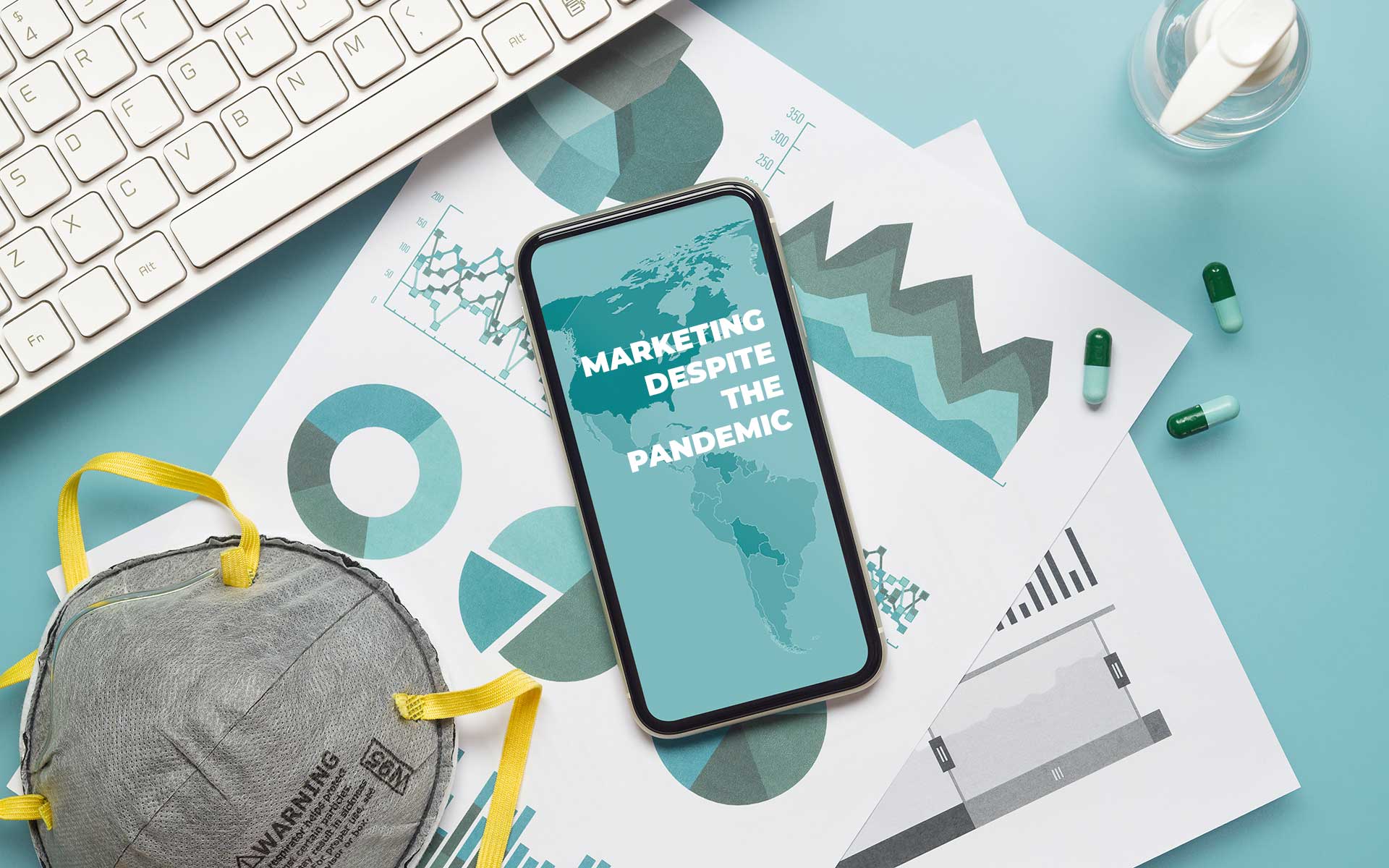
Digital marketing took a front seat during the pandemic as the world shut in and clicks became the driving force of commerce and interaction. Brands lagging behind the digital revolution faced a reckoning as operating online became SOP out of necessity.
The pandemic redirected human behavior in all aspects of daily life. Online shopping has seen a dramatic increase over the past 2 years, with US residents spending more than $870 billion in 2021 alone.
The soaring growth of eCommerce caught a lot of online sellers off guard, as we all grappled with the effects of supply chain issues, shortages and material price increases (hence all of the out of stock images on a lot of the products you’re seeing online). Many brands reported inventory problems due to the drastic increase in demand.
For marketers, we also faced a whole new set of challenges along with all that growth. In order to keep up with the trends, and impart some wisdom we’ve learned over the last 2 years, we’ve assembled a list of 10 Lessons learned since 2020.
1. Website Speed & Responsiveness is a Must
Of all the online marketing trends 2020 presented, this one is step numero uno, and it would be a mistake to call it a trend – because at this point it’s a well known fact. Poor website speed and responsiveness are transaction killers for any brand. Our economy’s digital prowess demands that brands consider user experience across all kinds of devices.
People don’t have time for slow-loading sites or glitchy online transactions. Why? Because they can get what they seek faster somewhere else, just clicks away. Our loyalty rate as consumers has dropped by 80% during the pandemic. You are no longer competing against your strongest competitors, you are competing with the last experience that user had with your own brand.
2. Digital-first Approach
New digital marketing trends may come and go, but calling ‘digital marketing’ a trend is a mistake. Today, we are here – fully entrenched in a digital age – this minute. So let’s talk about why a digital-first approach is not one of the marketing trends 2021 presented but an essential business practice.
What does taking a digital-first approach mean? A digital-first approach means making your brand effortless to find online by creating plenty of opportunities for engagement across multiple (sometimes all) digital channels.
A solid digital marketing strategy is less about the brand and more about how the consumer experiences your brand online. Brand interactions are happening in real-time and are more meaningful than ever before, so brands need to show up, be intentionally active, and genuinely responsive.
3. Webinars, Podcasts & Video to Replace
Live Events
Virtual interactions were one of the biggest marketing trends of 2020 that brands were very much forced to embrace as COVID-19 mandatory lockdowns all but rendered in-person events obsolete. Everything turned virtual around social distancing mandates and webinars and podcasts quickly replaced live, in-person events.
However, as lockdown restrictions eased, brands promptly realized that some of their audience still preferred digital access over in-person events. After all, webinars and podcasts eliminate in-person attendance ‘hassles’ – like travel time, costs and putting on pants. They also afford audiences flexibility in consuming the content – all in one sitting or over time.
So although live events are once again in full swing, at least for now, we learned that a hybrid approach to events and content sharing that includes digital alternatives is essential to maximizing impact.
4. SEO Became Indispensable
Remember when search engine optimization (SEO) was one of the “new trends” in digital marketing? We do too, fondly. Nowadays all of our stats are green and looking up. With the soaring increase in internet use, Google is reshaping online experience altogether, and having your website optimized for the right audience only makes sense with the staggering 40% increase in internet usage that has happened in the past 2 years.
Prioritizing SEO is an ongoing tactic that yields long term results, and puts your brand in front of your customers, right in the palm of their hands within seconds. Your positioning, messaging, website design, structure, and everything in between matters for your business more than ever.
Your website is the new brick and mortar and your SEO is the roadmap leading customers right to you.
5. Relevant HQ
Content Only
We are probably happiest with this one of all the marketing trends 2021 carried forward. Why? Because we’ve always preached that high-quality, relevant content is the gold standard for a brand’s growth online. Keyword stuffed articles and poorly written content for content’s sake won’t cut it anymore – and it can actually hurt your SEO efforts.
The reality is that people, in general, have become savvy content consumers in their thirst for immediate results and satisfying answers.
This thirst is precisely why high-quality content is better for SEO and critical for brand authority and trust. If your brand creates content that solves a problem, addresses a pain point, or provides much-needed answers in a clear, engaging manner, it will be read, shared, and re-read. This kind of action around your content will improve your SEO rankings, boost your brand authority, and continue to feed your marketing strategy for years to come.
6. The Evolution of Social Media
Do you remember MySpace? As new social networks continue to emerge, it’s become crystal clear that social media will always be relevant as long as people want to connect and network. Although keeping up with social media marketing trends is a long road to traverse, it’s a necessary evil to reach your destination – finding and engaging with your people.
However, this doesn’t mean a brand has to create an account on every social channel. Rather, it’s more important for brands to stay abreast of where their audience is engaging and join the conversation with consistent and meaningful content.
Showing up is only half the battle. Creating content that resonates with the social media users you’re trying to reach is how you win.
7. Making it Personal
Using data and intelligence to create and deliver tailored and “personalized” content is becoming even more essential in digital marketing. Personalization has been utilized in marketing for years, from geo-targeting tactics to abandoned cart emails, so it’s not fair to call it one of the online marketing trends of 2020 or 2021.
However, it is fair to lump personalization into the digital marketing lessons category because it’s essential to a brand’s growth. Research shows that 80% of consumers are more likely to make a purchase when brands offer a personalized experience1. So if you’re not using all the data available to provide your customers a tailored experience that keeps them engaged, you are leaving money on the table for a competitor to snatch up.
8. Data Privacy
Becomes Vital
Technology has made digital commerce so easy and streamlined that we’ve all become comfortable keeping our personal information online in countless different databases. Compound that with a global pandemic that forced companies to shift to digital operations, and we’ve created a virtual playground for hackers to thrive.
Data privacy is paramount to protecting your customer’s best interests and building trust in your brand. It’s borderline unethical not to take every possible step to protect your customer’s data.
9. Flexible Businesses Thriving
One of the most widespread digital marketing lessons learned during the pandemic was that flexibility is key to survival. The word “pivot” became as overused in marketing conversations as the word marketing itself, companies learned that the ability to adapt and shift with a changing marketplace is crucial to survival.
Make a plan, stick to it, then measure your successes and your shortcomings. Digital marketing, just like traditional marketing, requires an agile approach and a willingness to make data driven decisions to achieve ongoing growth year over year.
10. Omnichannel Approach for The
Ever-changing Times
Utilizing an omnichannel approach to marketing means providing customers with a seamless brand experience whether they are interacting with the brand online, in the store or over the phone.
Omnichannel marketing is an excellent example of how digital marketing trends can quickly become digital marketing lessons under the right circumstances, like a global pandemic. Much like the great OZ, an omnichannel strategy is how we “magically” align content experiences to appear seamless no matter where it’s accessed. Once considered cutting edge, an omnichannel marketing approach is now quite mainstream – expected even.
Navigating digital marketing has always been challenging. However, the pandemic forced a reckoning for brands and consumers alike. We learned that harnessing the power of digital marketing and everything it entails – from tactics to content creation to security – is the ticket to survival in today’s marketplace. However, there’s a highly technical dance behind strategic digital marketing strategies, and knowing the steps can save time and money.
The team of digital experts at Living Proof Creative has been doing this dance for years. We know the steps, and if you’re ready to take your digital marketing strategy to the next level and powerhouse your brand’s efforts online, we can get you there. Whether you need a complete eCommerce site build or a content strategy that puts your brand on the map, nothing is out of reach.
1 Source





